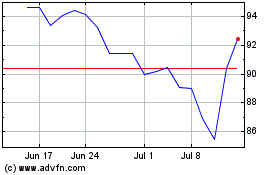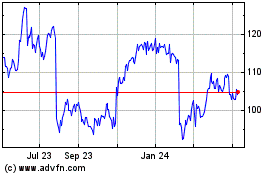- 40% plan to add new employees versus
50% in January and 31% in October
- 56% expect sales increase in 2015, down
from 61% last quarter
- Overtime pay stays high at 10.9% of
base pay reinforcing a need for more employees
Small business owners continue to reflect the optimism seen in
January, but now show moderated growth plans related to new hires,
compensation levels and overall sales, according to the most recent
Business Confidence Survey released today by Insperity, Inc. (NYSE:
NSP), a leading provider of human resources and business
performance solutions for America’s best businesses. Responses
indicate that 40 percent of business owners are adding employees
compared to 50 percent in January and 31 percent in October; and 52
percent are maintaining current staffing levels versus 47 percent
last quarter and 64 percent in October. Eight percent are planning
layoffs, up from three percent in January.
“Business owners are continuing the solid growth pattern
reflected in the January survey, but at a somewhat slower pace,”
said Paul J. Sarvadi, Insperity chairman and chief executive
officer. “One of the key contributions made by the nation’s small
business community is the ability to adjust quickly to economic
uncertainties and turn them into profitable opportunities. The
survey results suggest they are doing just that.”
Insperity also announced compensation metrics from its base of
thousands of small and medium-sized Workforce Optimization® clients
from across the United States. Average compensation for the first
quarter of 2015 increased 2.5 percent over the first quarter of
2014, and bonuses were up 11.6 percent compared to the year-ago
period. Overtime pay for the first quarter of 2015 was 10.9 percent
of regular pay compared to 9.4 percent in the first quarter of
2014, above the 10 percent level that generally indicates a need
for additional employees for the fourth quarter in a row.
According to the survey, 74 percent of participants said they
are meeting or exceeding their initial 2015 performance objectives,
down from 87 percent in January, but up slightly from 72 percent in
October. The current survey indicated 26 percent expect to do worse
in 2015 compared to 13 percent in January, 28 percent in October
and 8 percent in January 2014. When asked how the current economy
is affecting the bottom line of their business, 22 percent said it
is increasing earnings, 38 percent again replied with no real
change, 33 percent stated that it is decreasing earnings and 7
percent are unsure.
The economy and hiring the right people again ranked on top of
the list of short-term concerns at 51 percent and 50 percent,
respectively. Rising health care costs took third place at 44
percent, while controlling overall operational costs was a close
fourth at 43 percent. Long-term issues of concern to respondents
were again led by government expansion and its effect on business
at 50 percent, potential tax increases at 48 percent, the federal
deficit and the total national debt came in at 41 percent, and the
economy was 40 percent.
In spite of some responses indicating a pullback from a more
aggressive economic stance in January, 39 percent still plan to
increase employee compensation, down only slightly from 41 percent
last quarter. This compares to 23 percent in October and 28 percent
in July. The survey indicated 48 percent plan to maintain
compensation at current levels, versus 43 percent last quarter and
69 percent in October; as in January, two percent expect decreases;
and 12 percent are unsure compared to 14 percent last January.
Concerning their current profit-generating activities, 69
percent listed selling new accounts and 65 percent cited increased
service to existing clients, both the same percentages as January.
This was followed by 44 percent who selected adding new services or
products versus 50 percent in January, and 33 percent chose
investing in new improvement initiatives.
Insperity conducted the survey April 7-9, 2015, of chief
executive officers, chief financial officers and other executives
in a variety of industries from its base of approximately 5,400
Workforce Optimization® clients throughout the United States. The
overall sampling error of the national survey is (+/- 4.5) percent
at the 95 percent confidence level.
Insperity, a trusted advisor to America’s best businesses for
more than 29 years, provides an array of human resources and
business solutions designed to help improve business performance.
Insperity® Business Performance Advisors offer the most
comprehensive suite of products and services available in the
marketplace. Insperity delivers administrative relief, better
benefits, reduced liabilities and a systematic way to improve
productivity through its premier Workforce Optimization solution.
Additional company offerings include Human Capital Management,
Payroll Services, Time and Attendance, Performance Management,
Organizational Planning, Recruiting Services, Employment Screening,
Financial Services, Expense Management, Retirement Services and
Insurance Services. Insperity business performance solutions
support more than 100,000 businesses with over 2 million employees.
With 2014 revenues of $2.4 billion, Insperity operates in 57
offices throughout the United States. For more information, visit
http://www.insperity.com.
The statements contained herein that are not historical facts
are forward-looking statements within the meaning of the federal
securities laws (Section 27A of the Securities Act of 1933 and
Section 21E of the Securities Exchange Act of 1934). You can
identify such forward-looking statements by the words “expects,”
“intends,” “plans,” “projects,” “believes,” “estimates,” “likely,”
“possibly,” “probably,” “goal,” “opportunity,” “objective,”
“target,” “assume,” “outlook,” “guidance,” “predicts,” “appears,”
“indicator” and similar expressions. Forward-looking statements
involve a number of risks and uncertainties. In the normal course
of business, Insperity, Inc., in an effort to help keep our
stockholders and the public informed about our operations, may from
time to time issue such forward-looking statements, either orally
or in writing. Generally, these statements relate to business plans
or strategies, projected or anticipated benefits or other
consequences of such plans or strategies, or projections involving
anticipated revenues, earnings, unit growth, profit per worksite
employee, pricing, operating expenses or other aspects of operating
results. We base the forward-looking statements on our
expectations, estimates and projections at the time such statements
are made. These statements are not guarantees of future performance
and involve risks and uncertainties that we cannot predict. In
addition, we have based many of these forward-looking statements on
assumptions about future events that may prove to be inaccurate.
Therefore, the actual results of the future events described in
such forward-looking statements could differ materially from those
stated in such forward-looking statements. Among the factors that
could cause actual results to differ materially are: (i) adverse
economic conditions; (ii) regulatory and tax developments and
possible adverse application of various federal, state and local
regulations; (iii) the ability to secure competitive replacement
contracts for health insurance and workers’ compensation contracts
at expiration of current contracts; (iv) increases in health
insurance costs and workers’ compensation rates and underlying
claims trends, health care reform, financial solvency of workers’
compensation carriers, other insurers or financial institutions,
state unemployment tax rates, liabilities for employee and client
actions or payroll-related claims; (v) failure to manage growth of
our operations and the effectiveness of our sales and marketing
efforts; (vi) the competitive environment in the PEO industry may
impact growth and/or profitability; (vii) our liability for
worksite employee payroll, payroll taxes and benefits costs; (viii)
our liability for disclosure of sensitive or private information;
(ix) our ability to integrate or realize expected returns on our
acquisitions; (x) failure of our information technology systems;
(xi) an adverse final judgment or settlement of claims against
Insperity; and (xii) the actions of certain stockholders could
disrupt our business. These factors are discussed in further detail
in Insperity’s filings with the U.S. Securities and Exchange
Commission. Any of these factors, or a combination of such factors,
could materially affect the results of our operations and whether
forward-looking statements we make ultimately prove to be
accurate.
Except to the extent otherwise required by federal securities
law, we do not undertake any obligation to update our
forward-looking statements to reflect events or circumstances after
the date they are made or to reflect the occurrence of
unanticipated events.
View source
version on businesswire.com: http://www.businesswire.com/news/home/20150521005104/en/
Insperity, Inc.Investor Relations Contact:Douglas S.
Sharp, (281) 348-3232Senior Vice President of Finance,Chief
Financial Officer and TreasurerorNews Media Contact:Jason
Cutbirth, (281) 312-3085Senior Vice President of
Marketingjason.cutbirth@insperity.com
Insperity (NYSE:NSP)
Historical Stock Chart
From Mar 2024 to Apr 2024

Insperity (NYSE:NSP)
Historical Stock Chart
From Apr 2023 to Apr 2024
